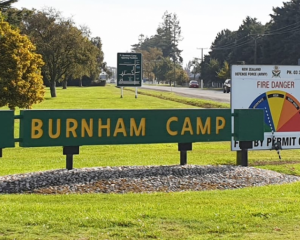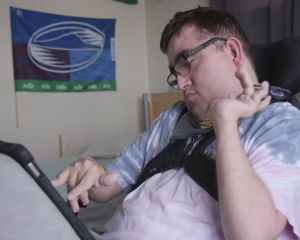Halfway between Invercargill and Bluff stands a small blue building surrounded by paddocks and dairy cows.
Remarkable as it might seem, this is the home of New Zealand's only civilian space facility.
The Awarua tracking station allows technicians using a moderately-sized satellite dish outside and $NZ2 million-$NZ3 million worth of sophisticated equipment inside to track spacecraft.
Its location and its relative isolation from an urban centre are the reasons it exists; Awarua has a high latitude, low horizons and lack of radio interference.
It is what is known in the industry as a ''fly-away'' station, standing empty for most of the year until it is needed. When that time arrives, telemetry technicians fly in with about 3.2 tonnes of equipment in sturdy aluminium crates, set up for the job they have been contracted to do for the European Space Agency (ESA), then pack up and fly out again.
South Africans Herman Steenkamp and Leon Korkie have been in Southland on and off since March on their fourth ESA contract. They have been joined this time by Gilles Sonny, a technician from French Guiana, in South America.
Months of preparation will come down to a few hours of intensive work tomorrow.
Weather and technical conditions permitting, an unmanned booster rocket carrying an automated transfer vehicle (ATV) will blast off from the ESA's International Space Port at Kourou, French Guiana, just before 10am New Zealand time.
About an hour later, when the booster and its payload are about 300km above the earth, the launcher should separate from the ATV - right above Awarua.
It will be a short, once-only journey for the multimillion-dollar booster. Moments after the separation, rockets will be fired at it to ensure it tumbles back into the earth's atmosphere and burns up.
The ATV will carry on to the International Space Station with more than seven tonnes of equipment, water, air and food. It will also carry fuel and once docked to the station - which it achieves automatically with an accuracy of 1.5cm - will be fired up to push the station further into space so it can maintain its orbit.
Mr Steenkamp and Mr Korkie will track the craft to record the separation and the booster tumbling back to Earth. They will send their data to Mr Sonny, who will stay in touch with two ESA control centres.
The separation and deorbiting will be all over in about 10 minutes, but the technicians will also have to track the booster's second pass later in the day.
They have spent many hours calibrating their equipment and carrying out ''dress rehearsals'' by test-tracking commercial satellites.
Tomorrow, their day will start about 2am with several simulations of the booster's planned trajectory. Their station has mains electricity but they will switch to a generator in case of a power cut.
''There is no second chance,'' Mr Korkie said.
The Awarua station is one of six across the globe which will track the launch.
Telemetry is the science and technology of automatic measurement and the sending of data by wire, radio, or electronic means from remote sources.
For Mr Steenkamp and Mr Korkie, 20-year telemetry veterans, tracking space craft is a ''sideshow'' to their main job - collecting data from flights at the Danel Overberg aircraft and weapons systems testing facility in South Africa.
Since 2000, their spacecraft tracking work has taken them to several locations including Namibia and Ghana.
They first came to Southland in 2007 when the Awarua tracking station was being set up and have returned almost every year since to track an ATV launch.
They said they enjoyed Southland.
''We love the place to bits. It is a fantastic place. It is first-world. And everything is clean,'' Mr Korkie said.
''Friendly people, beautiful countryside. Everything works, and if we have a problem with anything someone can fix it up for us like that,'' Mr Steenkamp said, snapping his fingers.
''We are always telling Southlanders they should appreciate what they've got.''
International Space Station
Launched in 1998, the station is home to between three and 10 people at any time. It is the size of four rugby fields - the largest artificial body in orbit - and can be seen from Earth with the naked eye on a clear night. It orbits the earth 16 times a day. The sun reflecting off the many solar panels used to recharge its power source makes it appear like a ball of fire.
To find out where the station is, go to Heavens-Above.com, a free website. Enter your location, the time of day, and what space object you want to look at. The website will tell you which direction to look in and at what times of the day.











